We had a chat with my cousin Raewyn in Christchurch using Margaret's phone at 1p per minute to finalise cruise arrangements. We then set off for Dover. The GPS took us around London then south so the roads were sort of familiar, but so much nicer today in the sun. We could see the white cliffs as we approached the town and also the large ships. One was an enormous cruise ship.
We arrived at the castle at 11am and booked in for the war tunnels tour at 2
.40pm. We then went to the NAAFI restaurant for coffee and cake. There were photos on the wall showing the place in use during WW2. There was a display telling us the history of the NAAFI (Navy, army and air force institute) and how initially solders only had their barracks but over time recreation rooms had developed until they finally had a shop, recreation rooms, library and lecture rooms, with the largest even having a cinema.
We walked around part of the walls which gave good views over Dover. The various gates had dates on them telling us when they were first built. They were often 13th century. We then went into the medieval tunnels, used in the 13th, 18th and 19th centuries. There were a number of warnings here about the uneven surfaces and steep slopes. One area had cannons in it but the tunnels were mainly empty.
We then went into the man part of the castle. The inner bailey was built for Henry II between 1179 and 1189 and contained the Great Tower
. The outer bailey was started then but not competed until the 13th century. As Henry was the most powerful monarch of his day the castle was built in keeping.
We followed the advice to go first to a display that was about Henry and also about the work done to create furnishing in the Great Tower in keeping with the times. The information about Henry told us about the extent of his empire but also of the problems with his children and how the empire was reduced over the proceeding years. It was OK but probably tried to interest both children and adults and fell down a bit in the process. There was some information about his sons Richard the Lionheart (who hardly spoke English we were told) and evil King John and also about his powerful wife, Eleanor (who he kept under house arrest). We were told how ambitious she was and of the dissention in the family over power and succession.
The display was in Arthur’s Hall, built by Henry III in the 1220’s to improve royal accommodation
. It was named after King Arthur who was supposed to have buried Gawaine (a knight of the roun-table) in this area. We could see a few parts of the original building here but most has been rebuilt.
There was a lot of mention of Thomas Beckett in this area. I hadn’t realised he had been a chancellor at the castle before becoming Archbishop of Canterbury. It was partly to assert his authority, aware that his reputation had been damaged after Thomas Becket’s death, that Henry built the Great Hall.
We were told many pilgrims, often nobles and archbishops would come through Dover on the way to his shrine at Canterbury. Henry would lodge them at the castle and entertain them in the Great Tower. It was commented that as many women as men went on pilgrimages but their names were rarely recorded. After the loss of Normandy by John, the castle turned more into a fortress.
We then went into the Great Tower
. It was very badly signposted and we nearly missed out on seeing some parts. We went first to the redecorated main chambers. Furniture, cushions and hangings have been added that as closely resemble the originals as the information available allows. There was a throne room and a bedchamber, in which a fire was blazing. The chapel nearby is in use.
We went up to the top to admire the wonderful 360 degree views. Then we found there was a kitchen area, set up as it would have been in Henry’s day. While we were there 'the King’ strolled past. There were meant to be a number of other people in the castle portraying people of the day but we didn’t see any others.
Luckily we also visited the museum of the Princess or Wales Regiment. It was one of the best such museums we had seen. It went through the history of the regiments over the centuries and even included a piece about the New Zealand wars. This mentioned that the British troops developed great respect for their Maori foes
.
For centuries the country relied on the Navy and didn’t have a permanent army until Cromwell. Charles II was going to abolish it against the advice of his brother, the Duke of York. Then Thomas Venner, a fanatical preacher, lead a riot against the King.Venner was caught, hung, drawn and quartered and the King changed his mind.
There was a piece about the sinking of the Birkenhead. The boat sank in 25 minutes and only three of the 8 lifeboats could be launched. Lt Colonel Seton and his men manned the pumps and stayed on board as the boat sank and the lifeboats carried the woman and children. King Frederick William of Prussia considered this such and example of the power of discipline that he ordered an account of it to be read to all troops under his control. A list of the men from the 2nd Foot who died was part of the display.
There was an interesting piece about the background to the Victoria Cross. It commented that the Crimean war was the first where correspondents were at the front and they could see both the bravery of ordinary soldiers and the incompetence at times of officers. The Times pointed out that 20,000 men died of cholera and typhoid (against 3200 who died in battle) because of inadequate clothing. Demand for a medal that all soldiers, irrespective of rank, could be awarded grew and Queen Victoria herself was keen
.
An early display referred to the King’s shilling. It said some recruiters would put the shilling at the bottom of a tankard of beer and when the drinker picked it out they had taken the shilling so were in the army. This practice stopped when a law was enacted in 1879.
Then we went back to the NAAFI to have soup for lunch. It was a sunny day but it was still not hot and soup appealed. John then went to have a snooze in the car while I explored further.
I went to the oldest area which had the remains of a Roman lighthouse and an Anglo-Saxon church. The age of the church of St Mary-in-the-Castle is not documented but archeologists have put dates ranging from the 4h century to the 10th century on it. There are large arches that use Roman brick and the argument is whether they were built by the Romans or by the Saxons using Roman brick. A church is recorded as being built within the castle by King Eadbald of Kent in 630 but this may have been in another castle in the town.
In the 12th century it was used as a church by people living in the castle. In the 13th century castle statutes directed a light be kept burning before the soldier’s altar and even appointed a sergeant to ensure this happened. The church had to be restored when the roof fell in during the 19th century. At this time the stained glass windows, a timber roof and lovely mosaic walls were installed
.
The church was sadly very busy during Dunkirk. The senior Chaplain conducted 140 funerals in 2 weeks. At times, because of air raids, his wife was the only member of the congregation.
Next to it is the ruins of a Roman lighthouse. It was built in 150AD as one of a pair that helped guide ships into the harbour. It is supposedly still guarded by a ghostly centurion. It has been suggested that bricks from the lighthouse were used in the church construction.
John woke in time for us to join the 2.40pm Secret Wartime Tunnels tour. No photos were allowed in the tunnels. The tunnels had been prepared for an invasion by Napolean but had not been needed. Cornish miners, working only with pick axes, had dug 2 miles of tunnels. In the following years they were used occasionally by smugglers only. Leading up to WW2, Admiral Ramsey came out of retirement to work on the expansion of the tunnels.
The tunnels are in three parts. The top part was used as an underground hospital. While really intended for military wounded, it was also used for civilian operations when not busy. This part has been refurnished as it would have been. We went through the reception area, a ward, kitchens and bathrooms and finally in to an operating theatre. There were the sounds and smells of the time, with flickering lights to add to the effect
. At then end we were asked to identify the smells, which were of antiseptic, food, cigarette smoke and finally anesthetic. Our guide said that the smells had previously included blood but had had to be toned down. People had been fainting which meant first aiders had to be called and this also held up the tours. He was clearly disappointed that the atmosphere was less realistic than had been intended.
The bottom tunnels were known as Dumpy (Deep underground military …) and were developed during WW2. Because they would be difficult to evacuate in case of emergency they are not open as part of the tour. Dumpy was also used in the Cold War as a nuclear shelter, however because of the porous nature of the soft-sand stone they would have been next to useless in keeping out any radiation for long. The plan was to play back to back episodes of the Archers on BBC if a bomb was dropped so submarines would know not to surface for as long as possible. The tunnels were taken out of military control once the lack of protection was realised and eventually opened to the public
.
The third part was self guided. This is the part that was Command Headquarters during the war. Admiral Ramsay organised the evacuation of Dunkirk from here. Admiral Ramsay was also heavily involved in the planning for Operation Overlord, again based in the tunnels. We saw a telephone room, operations room and an early computer.
Admiral Ramsay’s statue is in a prominent place at the sea side of the castle. There was a plaque outlining his career. He had been a ship commander at the end of WW1 and had been recalled to be Flag officer at Dover at the start of WW2. He had a week to organise the evacuation of Dunkirk, Operation Dynamo. Initial estimates said they would need to rescue 45,000 men but over 8 days the 693 boats picked up over 338,000.
After commands in Sicily and Africa he was appointed to run Operation Neptune, the naval part of the Overland plan. He was responsible for ensuring 6833 vessels successfully delivered servicemen into France
. He died in an air crash in January 1945.
We finally went to the admiralty lookout, used in both wars to spot enemy planes and ships. There was a telephone exchange here but also telegraph, flags and lamps for communication. 2 rooms were set out as they would have been in the war but the top was also open and the views from there were great. We got very good views of the white cliff of Dover (but we didn’t see any blue birds).
As we left we were asked to answer a few questions. The market research took about 10 minutes. We then drove up to the cliffs where we could get free parking using our Heritage Passes. After icecreams in the café, John stayed in the car and watched the boats going in and out of port, while I found a cache at a spot with another wonderful view of the castle.
We then drove up to Deal (where we saw the castle from the outside) and then to Sandwich before finding a pub in Wingam
. John was keen to stay there as it reminded him of an old Intermediate School girlfriend whom he met while playing a major part (the 3rd tree!!) in a school production of the Briary Bush. The atmosphere in the pub was friendly and the food was very good. We had found a few caches on the way and the last brought our total up to 1600.
Our return to London took us north on motorways and we made very good time. Then as we approached London the roads were smaller and busier. We missed a turn at one stage and found ourselves in a more central part of London than we wanted. John was concentrating on the roads so it was only I who saw we had passed by St Paul’s Cathedral. We hope we don’t get hit by the congestion charge for straying into the city. John reckons we just about covered every street on the Monopoly Board as we fought to extract ourselves from the city centre. Once we were finally clear of the centre it was a much easier drive back to Acton.
We had a cuppa with the others who were still all up, said farewell in case we didn’t see them in the morning and went to bed.
There'll be blue birds over......
Tuesday, August 31, 2010
 London, England, United Kingdom
London, England, United Kingdom
Other Entries
-
88Dawdling down to Dumfries
Aug 1417 days prior Dumfries, United Kingdomphoto_camera14videocam 0comment 0
Dumfries, United Kingdomphoto_camera14videocam 0comment 0 -
89A visit to wee Robbie
Aug 1516 days prior Dumfries, United Kingdomphoto_camera22videocam 0comment 0
Dumfries, United Kingdomphoto_camera22videocam 0comment 0 -
90Off to see cookie bear
Aug 1615 days prior Shrewsbury, United Kingdomphoto_camera8videocam 0comment 0
Shrewsbury, United Kingdomphoto_camera8videocam 0comment 0 -
91Hanging out with Sabrina
Aug 1714 days prior Shrewsbury, United Kingdomphoto_camera20videocam 0comment 0
Shrewsbury, United Kingdomphoto_camera20videocam 0comment 0 -
92Welcome to Wales boyo
Aug 1813 days prior Cardiff, United Kingdomphoto_camera9videocam 0comment 0
Cardiff, United Kingdomphoto_camera9videocam 0comment 0 -
93Wales in the wet
Aug 1912 days prior Cardiff, United Kingdomphoto_camera5videocam 0comment 1
Cardiff, United Kingdomphoto_camera5videocam 0comment 1 -
94Cardiff Castle to Barnhill Cottage
Aug 2011 days prior Brampford Speke, United Kingdomphoto_camera16videocam 0comment 1
Brampford Speke, United Kingdomphoto_camera16videocam 0comment 1 -
95The Black Adderrrr....
Aug 2110 days prior Brampford Speke, United Kingdomphoto_camera7videocam 0comment 0
Brampford Speke, United Kingdomphoto_camera7videocam 0comment 0 -
96Visiting the rellies in Kents Caves
Aug 229 days prior Brampford Speke, United Kingdomphoto_camera12videocam 0comment 0
Brampford Speke, United Kingdomphoto_camera12videocam 0comment 0 -
97Moor travels
Aug 238 days prior Brampford Speke, United Kingdomphoto_camera14videocam 0comment 0
Brampford Speke, United Kingdomphoto_camera14videocam 0comment 0 -
98Motoring to Bealieu
Aug 247 days prior Chichester, United Kingdomphoto_camera10videocam 0comment 1
Chichester, United Kingdomphoto_camera10videocam 0comment 1 -
991066 and all that
Aug 256 days prior Chichester, United Kingdomphoto_camera3videocam 0comment 0
Chichester, United Kingdomphoto_camera3videocam 0comment 0 -
100Catching up with Chalky and Pam
Aug 265 days prior Chichester, United Kingdomphoto_camera16videocam 0comment 0
Chichester, United Kingdomphoto_camera16videocam 0comment 0 -
101Visiting Leeds Castle
Aug 274 days prior Chichester, United Kingdomphoto_camera10videocam 0comment 0
Chichester, United Kingdomphoto_camera10videocam 0comment 0 -
102Chichester to Winchester to London
Aug 283 days prior London, United Kingdomphoto_camera26videocam 0comment 0
London, United Kingdomphoto_camera26videocam 0comment 0 -
103Fast cars, a Palace and treacle
Aug 292 days prior London, United Kingdomphoto_camera6videocam 0comment 0
London, United Kingdomphoto_camera6videocam 0comment 0 -
104Cruising down the River
Aug 301 day prior London, United Kingdomphoto_camera11videocam 0comment 0
London, United Kingdomphoto_camera11videocam 0comment 0 -
105There'll be blue birds over......
Aug 31 London, United Kingdomphoto_camera22videocam 0comment 0
London, United Kingdomphoto_camera22videocam 0comment 0 -
106To Ireland begorrah...
Sep 011 day later Ballymacaw, Irelandphoto_camera2videocam 0comment 0
Ballymacaw, Irelandphoto_camera2videocam 0comment 0 -
107A fox on the run
Sep 022 days later Ballymacaw, Irelandphoto_camera3videocam 0comment 0
Ballymacaw, Irelandphoto_camera3videocam 0comment 0 -
108Cuisin' the Copper Coast
Sep 033 days later Ballymacaw, Irelandphoto_camera6videocam 0comment 0
Ballymacaw, Irelandphoto_camera6videocam 0comment 0 -
109Quick note to everyone re earthquake
Sep 044 days later Ballymacaw, Irelandphoto_camera0videocam 0comment 1
Ballymacaw, Irelandphoto_camera0videocam 0comment 1 -
110A shaky start
Sep 044 days later Ballymacaw, Irelandphoto_camera6videocam 0comment 0
Ballymacaw, Irelandphoto_camera6videocam 0comment 0 -
111From Famine ships to hurling
Sep 055 days later Ballymacaw, Irelandphoto_camera4videocam 0comment 0
Ballymacaw, Irelandphoto_camera4videocam 0comment 0 -
112By Hook or by Crooke
Sep 066 days later Ballymacaw, Irelandphoto_camera14videocam 0comment 0
Ballymacaw, Irelandphoto_camera14videocam 0comment 0 -
113It's a long way...
Sep 077 days later Ballymacaw, Irelandphoto_camera17videocam 0comment 0
Ballymacaw, Irelandphoto_camera17videocam 0comment 0 -
114Wandering about Wexford
Sep 088 days later Ballymacaw, Irelandphoto_camera15videocam 0comment 0
Ballymacaw, Irelandphoto_camera15videocam 0comment 0 -
115The Rain of Kerry
Sep 099 days later Ballymacaw, Irelandphoto_camera5videocam 0comment 0
Ballymacaw, Irelandphoto_camera5videocam 0comment 0 -
116Nothin' much doin'
Sep 1010 days later Ballymacaw, Irelandphoto_camera3videocam 0comment 0
Ballymacaw, Irelandphoto_camera3videocam 0comment 0 -
117A load of Blarney
Sep 1111 days later Ballymacaw, Irelandphoto_camera15videocam 0comment 0
Ballymacaw, Irelandphoto_camera15videocam 0comment 0 -
118The products of Waterford
Sep 1212 days later Ballymacaw, Irelandphoto_camera13videocam 0comment 0
Ballymacaw, Irelandphoto_camera13videocam 0comment 0 -
119Doin' Dublin
Sep 1313 days later Ballymacaw, Irelandphoto_camera14videocam 0comment 1
Ballymacaw, Irelandphoto_camera14videocam 0comment 1 -
120Old fossils in Kilkenny
Sep 1414 days later Ballymacaw, Irelandphoto_camera17videocam 0comment 0
Ballymacaw, Irelandphoto_camera17videocam 0comment 0 -
121Ciao Ballymacaw
Sep 1515 days later Rome, Italyphoto_camera2videocam 0comment 0
Rome, Italyphoto_camera2videocam 0comment 0 -
122Cheers Bros
Sep 1616 days later Rome, Italyphoto_camera12videocam 0comment 0
Rome, Italyphoto_camera12videocam 0comment 0 -
123Roamin' Rome
Sep 1717 days later Rome, Italyphoto_camera8videocam 0comment 0
Rome, Italyphoto_camera8videocam 0comment 0

 London, England, United Kingdom
London, England, United Kingdom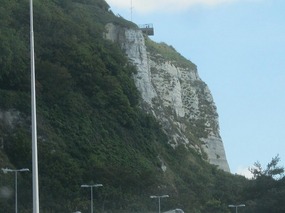
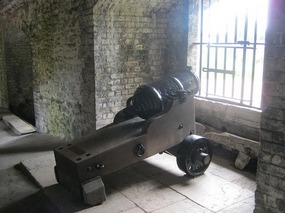
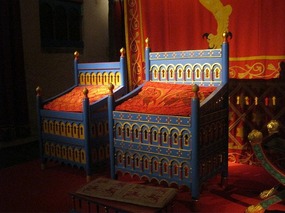
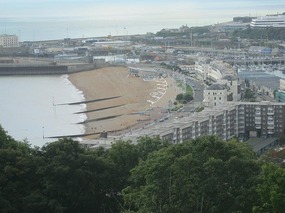
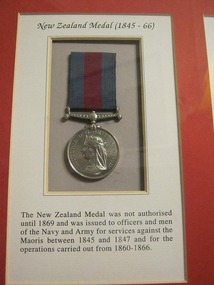
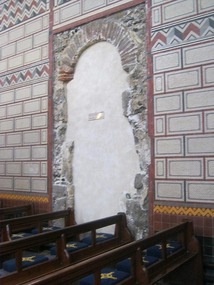
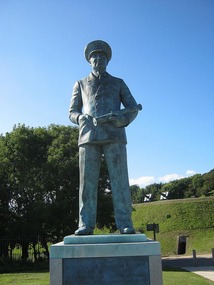
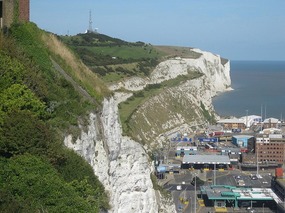
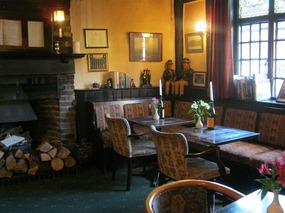
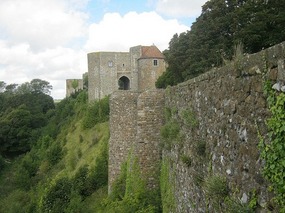
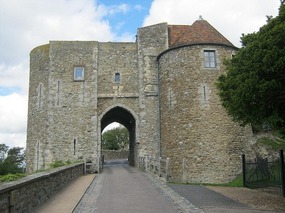



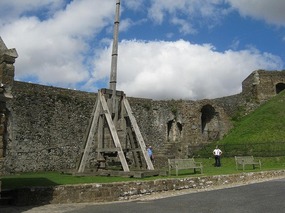
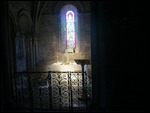
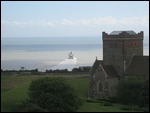
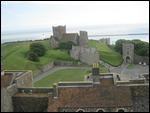
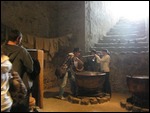
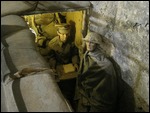
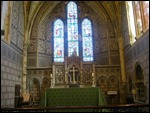
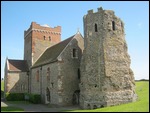
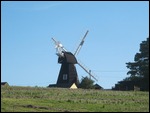

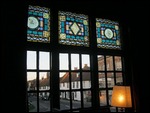
2025-05-22